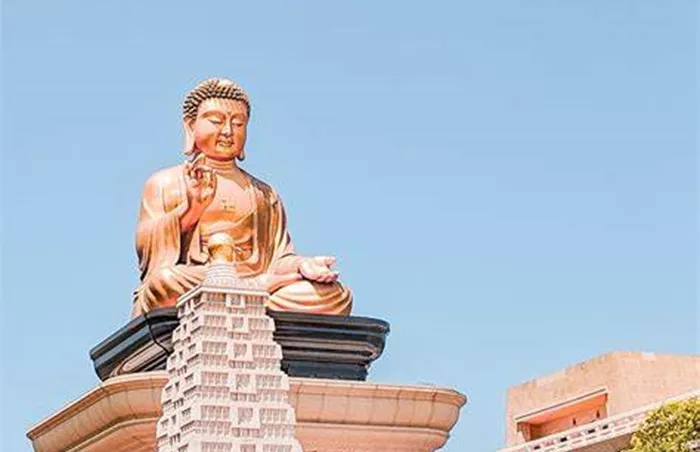Buddha statues are more than just decorative pieces; they hold deep spiritual significance in Buddhism. Each statue, with its unique posture and gesture, embodies specific teachings and aspects of the Buddha’s life. Understanding these representations can enhance one’s appreciation of Buddhist art and philosophy. In this article, we will explore the meanings behind the four primary Buddha statues: the Sitting Buddha, Standing Buddha, Walking Buddha, and Reclining Buddha.
Sitting Buddha
The Sitting Buddha statue is one of the most prevalent forms found in Buddhist temples and homes. This posture holds profound meaning and reflects a significant moment in the Buddha’s journey to enlightenment.
Symbolism of the Sitting Buddha
The Sitting Buddha is typically depicted in a meditative pose, with legs crossed and hands resting on the lap. This posture symbolizes:
Meditation and Mindfulness: The cross-legged position signifies deep meditation, representing the Buddha’s path to enlightenment under the Bodhi tree.
Inner Peace: The serene expression conveys tranquility and the peace that comes from inner reflection.
Spiritual Awakening: This pose commemorates Siddhartha Gautama’s attainment of enlightenment, marking his transformation into the Buddha.
Variations of the Sitting Buddha
There are several variations of the Sitting Buddha, each highlighting different aspects of his teachings:
Lotus Position (Padmasana): Both feet placed on opposite thighs, symbolizing purity and detachment from material concerns.
Burmese Position: One foot resting on the opposite thigh, with the other foot placed on the ground, indicating a balance between meditation and engagement with the world.
Thai Position: Both feet on the ground, hands resting on the lap, representing readiness to teach.
Standing Buddha
The Standing Buddha statues are elegant representations that convey specific messages and teachings.
Symbolism of the Standing Buddha
The Standing Buddha is characterized by an upright posture with arms either at the sides or in specific gestures (mudras). This posture symbolizes:
Teaching and Guidance: The standing position often depicts the Buddha delivering sermons, emphasizing his role as a teacher.
Protection and Blessing: Certain hand gestures, such as the Abhaya Mudra (raised right hand), convey protection and fearlessness.
Compassion and Accessibility: Standing statues are approachable, reflecting the Buddha’s compassion and willingness to assist all beings.
Common Hand Gestures (Mudras) in Standing Buddha Statues
Abhaya Mudra: The right hand raised, palm facing outward, symbolizing protection and the dispelling of fear.
Vitarka Mudra: The thumb and index finger touching, forming a circle, representing the transmission of teachings and the cycle of teaching and learning.
Varada Mudra: The right hand lowered, palm facing outward, indicating generosity and the granting of wishes.
Walking Buddha
The Walking Buddha statues are dynamic representations that capture movement and grace.
Symbolism of the Walking Buddha
The Walking Buddha is depicted in a gentle stride, with one foot forward and hands in specific gestures. This posture symbolizes:
Grace and Serenity in Movement: Reflects the Buddha’s calm and composed nature, even in motion.
Teaching in Action: Often associated with the Buddha’s journey to spread his teachings, emphasizing the importance of action in the path to enlightenment.
Balance Between Solitude and Engagement: Represents the equilibrium between personal meditation and active engagement with the world.
Significance of the Walking Buddha in Southeast Asia
In countries like Thailand, the Walking Buddha holds particular significance:
Cultural Identity: Represents Thai artistic expression and national identity.
Spiritual Aspirations: Inspires devotees to embody the Buddha’s qualities in daily life, moving gracefully through challenges.
Reclining Buddha
The Reclining Buddha statues are serene depictions that invite contemplation on the nature of existence.
Symbolism of the Reclining Buddha
The Reclining Buddha is shown lying on one side, often with the head supported by a cushion. This posture symbolizes:
Parinirvana (Final Nirvana): Represents the Buddha’s entry into final nirvana after death, marking the end of his earthly existence.
Impermanence of Life: Serves as a reminder of the transient nature of life and the inevitability of death.
Peaceful Transition: The calm demeanor encourages acceptance of mortality and the cycle of life.
Locations and Significance
Reclining Buddha statues are commonly found in:
Temples and Monasteries: Serve as focal points for meditation and reflection on mortality.
Cultural Sites: Attract visitors and pilgrims, offering a space for contemplation and understanding of Buddhist teachings.
Conclusion
Each of these four Buddha statues—the Sitting, Standing, Walking, and Reclining Buddhas—offers a unique window into the life and teachings of Siddhartha Gautama. They serve as visual representations of key moments and principles in Buddhism, guiding practitioners toward mindfulness, compassion, and enlightenment. Understanding their meanings enriches one’s spiritual journey and deepens appreciation for Buddhist art and philosophy.

